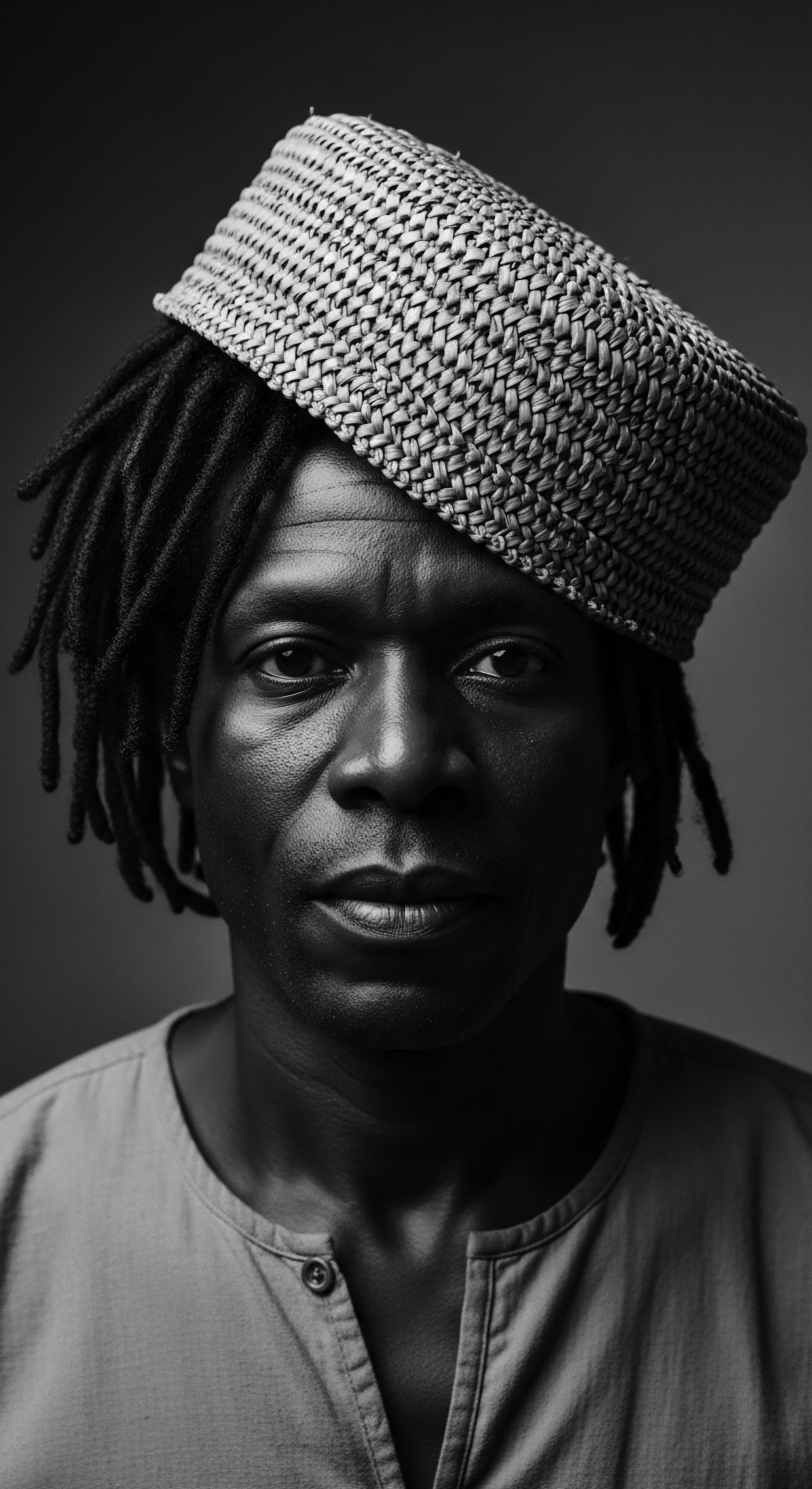
Fundamentals
The conversation surrounding hair often commences with its physical form ❉ a collection of protein strands emerging from the scalp, differing in curl pattern, hue, and texture across human populations. Yet, to truly grasp the meaning of what we call the Cultural Hair Essence, one must journey beyond mere biological attributes. It is an understanding that recognizes hair not simply as a physiological outgrowth but as a profound repository of collective memory, a living archive of identity, and a conduit for ancestral wisdom within communities, especially those with rich traditions of textured hair. This core statement serves as the foundation for its interpretation.
From the earliest epochs of human existence, hair held significant societal and spiritual weight. Ancient civilizations, even before written records, often utilized hairstyles as a primal language, a form of visual communication that conveyed intricate details about an individual’s place within the collective. The head, regarded by many African cultures as the highest point of the body, was revered as a direct connection to the divine, a portal for spirits, and a seat of power and identity. This reverence meant that the styling and care of hair were never trivial acts; they were, instead, deeply ritualistic, communal, and often sacred engagements.
The biological distinctiveness of textured hair, characterized by its tightly coiled strands and curved follicular structure, offered unique advantages in the varied climates of its origins, particularly in Africa. This architecture provided insulation, shielded the scalp from intense ultraviolet radiation, and aided in moisture retention within arid environments. Over countless generations, these inherent characteristics became intertwined with cultural practices, forming the elemental biology from which the Cultural Hair Essence springs forth, an echo from the very source of human adaptation and creativity.

The Biological Scaffold
Hair, at its most fundamental, is a biological fiber, primarily composed of keratin, a protein also found in skin and nails. Its structure, from the follicle within the scalp to the visible strand, is a marvel of natural engineering. Textured hair, particularly afro-textured hair, exhibits a distinct helical structure, its individual strands coiling tightly upon themselves. This coiled configuration influences how light reflects, how moisture is retained or lost, and how external forces interact with the strand.
The curved shape of the hair follicle itself, a characteristic unique to certain populations, contributes to this tight coiling. This biological reality forms the physical basis for many ancestral hair care practices, which intuitively addressed the needs of this particular hair type, long before modern scientific instruments could dissect its every curve.
The genetic variations that result in differing hair textures across human populations reflect ancient adaptive processes. For example, afro-textured hair is believed to be an evolutionary response to intense UV radiation in African climates, providing protective benefits. This scientific understanding, however, gains its true cultural resonance when we consider how these biological adaptations were not merely observed but were also celebrated, adorned, and interpreted through generations of human experience.
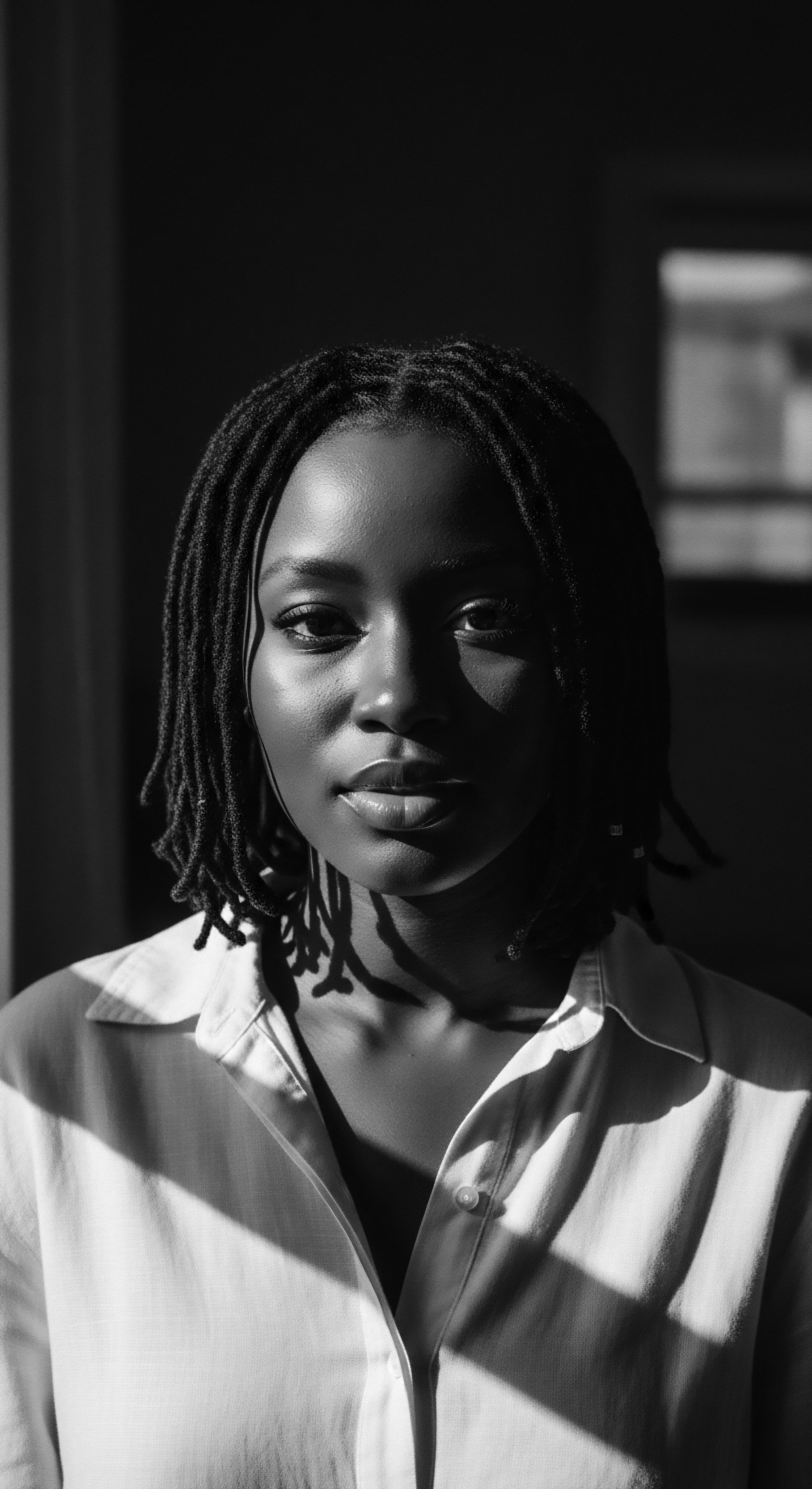
Hair as a First Language
Before the widespread use of written scripts, hairstyles served as a complex, unspoken language within numerous African societies. The way one’s hair was styled communicated a wealth of information ❉ one’s age, marital status, social standing, tribal affiliation, wealth, and even personal achievements. A specific braid pattern might identify a particular tribe, or a woman’s hair left unstyled could signify mourning.
In ancient African societies, hairstyles conveyed intricate details about an individual’s social status, age, marital standing, and even spiritual beliefs.
Consider the Yoruba people of Nigeria, where specific hairstyles indicated community roles. The visual declaration of identity through hair was a powerful tool, allowing for immediate recognition and understanding within a community. This communal understanding of hair as a form of social currency underscores a vital aspect of the Cultural Hair Essence ❉ its function as a medium for identity inscription and social cohesion.
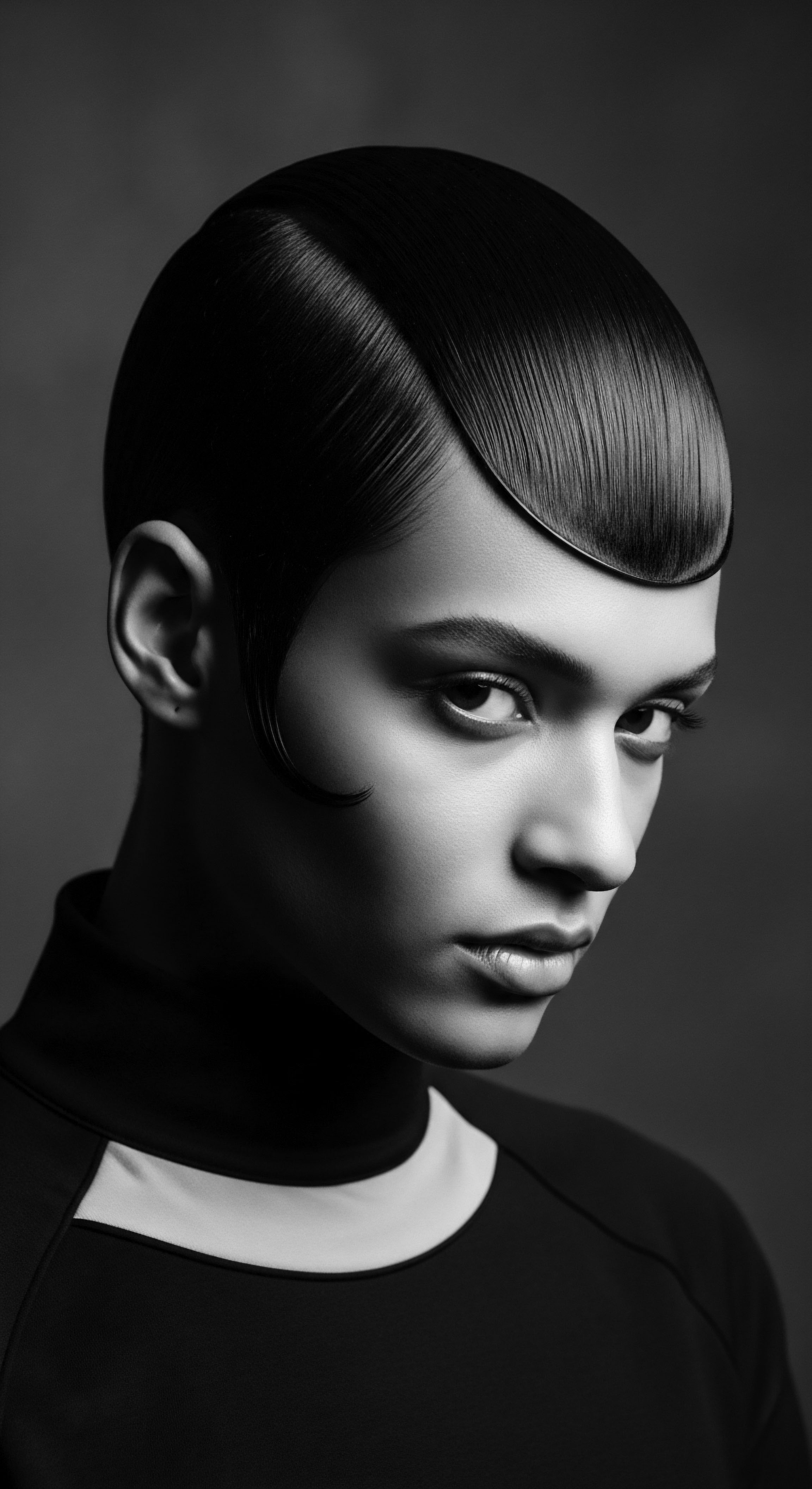
Early Bonds of Care
The tending of hair was, and remains, a deeply communal act, especially within African and diasporic communities. Hair grooming was a social activity that strengthened familial bonds, with skills and oral histories passed down from elder women to younger generations. This process involved not just the physical manipulation of strands but also the sharing of stories, wisdom, and a sense of belonging. Children often learned braiding techniques by practicing on siblings or adults, marking a rite of passage into shared cultural knowledge.
Natural ingredients, often sourced from the immediate environment, were integral to these ancient practices. Shea butter, various oils, and herbal concoctions were intuitively used to moisturize, protect, and maintain the health of textured hair, long before the advent of industrial cosmetology. This holistic approach to hair care, where well-being of the hair was intrinsically linked to the well-being of the individual and the community, represents a cornerstone of the Cultural Hair Essence, highlighting a profound, historically grounded wisdom in care.
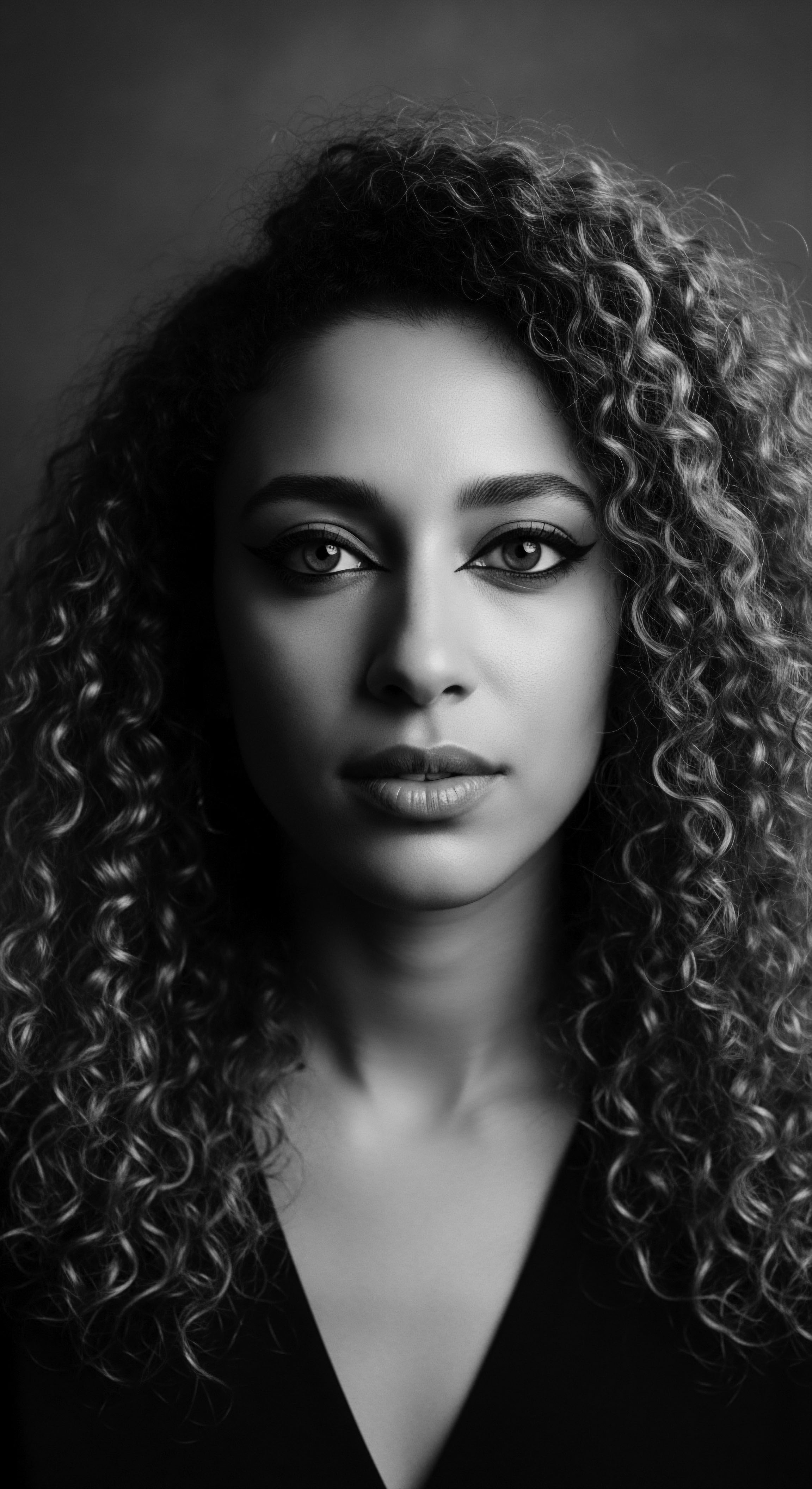
Intermediate
As we deepen our understanding of the Cultural Hair Essence, we must acknowledge that its journey has not been without profound challenges, particularly for Black and mixed-race communities. Hair, once a vibrant canvas of identity and belonging in pre-colonial African societies, became a site of oppression and resistance under colonial and post-colonial regimes. The rich symbolic meaning of hair transformed, burdened by imposed Eurocentric beauty standards that devalued natural textures and deemed them “uncivilized” or “unprofessional”.
This historical imposition led to pervasive hair discrimination, forcing many Black people to chemically alter their hair texture or conceal it to assimilate into dominant societal norms and access opportunities in education and employment. Yet, through this very struggle, the Cultural Hair Essence continued its quiet work, shaping narratives of resilience and self-acceptance that persist to this day. Its continuing influence speaks volumes about the intrinsic worth of these traditions, regardless of external pressures.
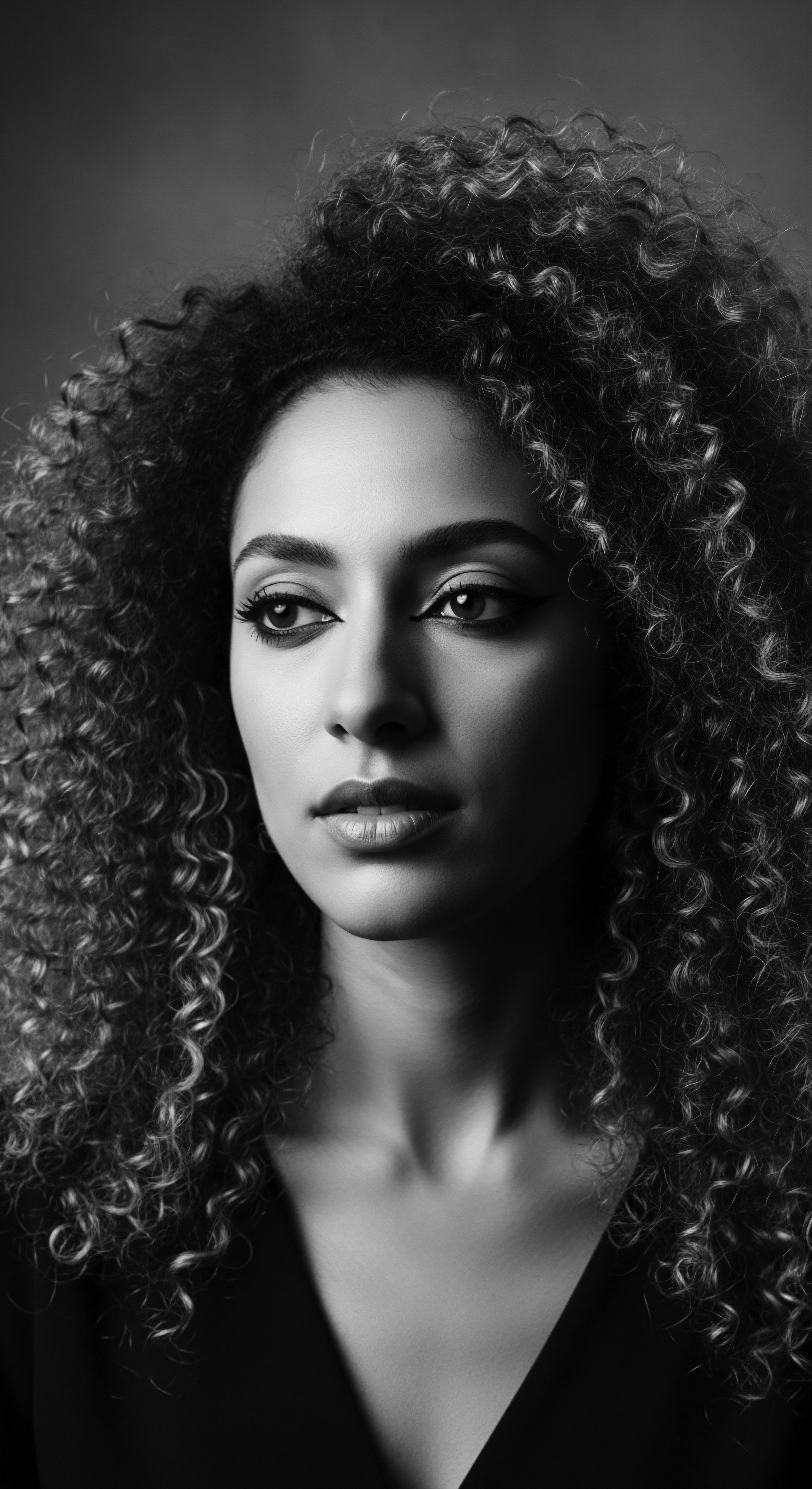
Strands of Society
Beyond personal expression, hair functioned as a potent marker of societal organization in pre-colonial Africa. The intricacies of a hairstyle could speak of an individual’s journey through life, from childhood to marriage, and into elder wisdom. For example, in the Benin Kingdom, the hairstyles of Chiefs, such as the Uguakpata and Ogbon, served not just as aesthetic choices but as clear symbols of their high status and deep connection to the Oba (King) and the royal traditions. The Ogbon, with its three vertical plaits at the back of the head, distinctly marked an esteemed position.
Hair was also seen as a source of spiritual power and a conduit for divine communication. This spiritual dimension meant that hair care practices were often imbued with ritualistic significance, intended to invite good fortune or ward off negative influences. The ceremonial aspects of hair grooming strengthened communal bonds, as the act of styling was a shared experience, reinforcing cultural identity and collective memory.
| Aspect of Identity Social Status |
| Significance Conveyed Authority, wealth, rank within community. |
| Cultural Examples Benin Chiefs' Ogbon hairstyle, Mangbetu braided crowns. |
| Aspect of Identity Age & Life Stage |
| Significance Conveyed Readiness for marriage, passage into womanhood, elder wisdom. |
| Cultural Examples Mende society's well-groomed hair, first braiding sessions for young girls. |
| Aspect of Identity Tribal Affiliation |
| Significance Conveyed Belonging to a specific ethnic group or clan. |
| Cultural Examples Fulani cornrows, Himba braids with clay. |
| Aspect of Identity Spiritual Connection |
| Significance Conveyed Conduit to divine, protection, mourning, good fortune. |
| Cultural Examples Yoruba spiritual hairstyles, general belief in hair as power source. |
| Aspect of Identity These traditional styles demonstrate hair's integral role as a communicative and sacred element across diverse African cultures. |

Echoes of Disruption
The transatlantic slave trade marked a brutal rupture in these established cultural traditions. Upon arrival in the Americas, enslaved Africans were systematically stripped of their cultural markers, including their distinct hairstyles, often through forced shaving. This deliberate act aimed to dehumanize, erase lineage, and dismantle self-worth. The inherent beauty of textured hair was demonized, labeled as “woolly” or “nappy” and deemed unattractive or unprofessional by Eurocentric standards.
During the transatlantic slave trade, the forced shaving of hair served as a psychological tactic to strip enslaved Africans of their culture and identity.
This suppression continued for centuries, with immense societal pressure on Black people to conform to white beauty ideals. Straightening methods, such as hot combs and chemical relaxers, became prevalent, sometimes serving as a survival tactic for individuals seeking acceptance in workplaces and schools. The Cultural Hair Essence persisted through these trials, not as a static entity, but as a dynamic force adapting to profound adversity.

The Unyielding Spirit
Despite concerted efforts to suppress and stigmatize Black hair, cultural traditions persisted, evolving into powerful symbols of resistance and resilience. During the Civil Rights Movement of the 1960s and 1970s, the Afro emerged as a potent statement of Black pride, a rejection of Eurocentric beauty norms, and a visible assertion of African heritage. Icons like Angela Davis wore their natural hair as a political declaration, challenging societal expectations and reclaiming their identity.
The natural hair movement, which gained momentum in subsequent decades, continued this legacy, encouraging individuals to embrace their authentic hair textures and reject harmful chemical treatments. Styles such as cornrows and dreadlocks became powerful expressions of self-love and connection to cultural lineage. This period also witnessed the growth of a dedicated hair care industry, providing products specifically formulated for textured hair, thereby empowering individuals to nurture their natural beauty. The ongoing journey of the Cultural Hair Essence demonstrates how hair remains a deeply personal and collective expression of identity, resilience, and pride, continually evolving in response to societal forces while remaining rooted in its ancestral past.

Academic
The Cultural Hair Essence, from an academic perspective, constitutes a complex, polysemic construct that interweaves biophysical realities with socio-historical narratives, symbolic systems, and psychological frameworks, particularly within the context of textured hair and communities of African descent. It delineates the inherent capacity of hair to embody, transmit, and reshape cultural meaning across generations, acting as both a deeply personal expression and a collective archive of heritage, resistance, and identity. This concept transcends a mere anthropological description of hair practices, extending into a critical examination of how hair actively participates in the construction of selfhood, community solidarity, and socio-political discourse.
The interpretation of Cultural Hair Essence requires a nuanced understanding of its dynamic interplay between biology and culture. While the biophysical characteristics of textured hair – its coiled structure, elasticity, and density – are a product of evolutionary adaptation to specific environments, these characteristics gain their profound significance through cultural valuation and practice. The very act of caring for, styling, or adorning textured hair is not merely a cosmetic endeavor; it is a culturally mediated performance that draws upon millennia of inherited knowledge, aesthetic sensibilities, and social codes. This layered understanding allows for a comprehensive exploration and expert thought regarding its impact on human experience.

The Multivalent Nature of Cultural Hair Essence
The Cultural Hair Essence operates at multiple, interconnected levels of human experience.
- Ontological Significance ❉ Within many African cosmologies, hair is considered a direct conduit to the divine, spirits, and ancestors, a belief rooted in the head’s position as the body’s highest point. This spiritual connection imbues hair with a sacred quality, influencing ritualistic care practices aimed at fostering communication with the spiritual realm or invoking protection. For instance, the Yoruba people of Nigeria held significant spiritual meanings in their hairstyles, with certain orishas described as skilled hairdressers.
- Epistemological Function ❉ Hair served as a rich source of knowledge and communication, capable of conveying intricate information about an individual’s identity, social standing, and life events. This semiotic role meant that hair functioned as a living text, readable by those within the cultural context, offering immediate insights into family background, wealth, age, or marital status.
- Sociological Identifier ❉ Hair acts as a powerful marker of social group membership and collective identity. Throughout history, specific hairstyles have delineated tribal affiliations, community roles, and even political stances. This function became particularly salient during periods of forced displacement and oppression, where hair served as a visible means of cultural preservation and resistance.
- Psychological Anchor ❉ For individuals, especially within Black and mixed-race communities, hair directly impacts self-perception, self-esteem, and personal identity. The journey of hair, often marked by struggles against Eurocentric beauty standards and societal discrimination, becomes deeply intertwined with personal narratives of acceptance, pride, and empowerment. The process of embracing natural hair often signifies a vital step in defining one’s cultural identity.
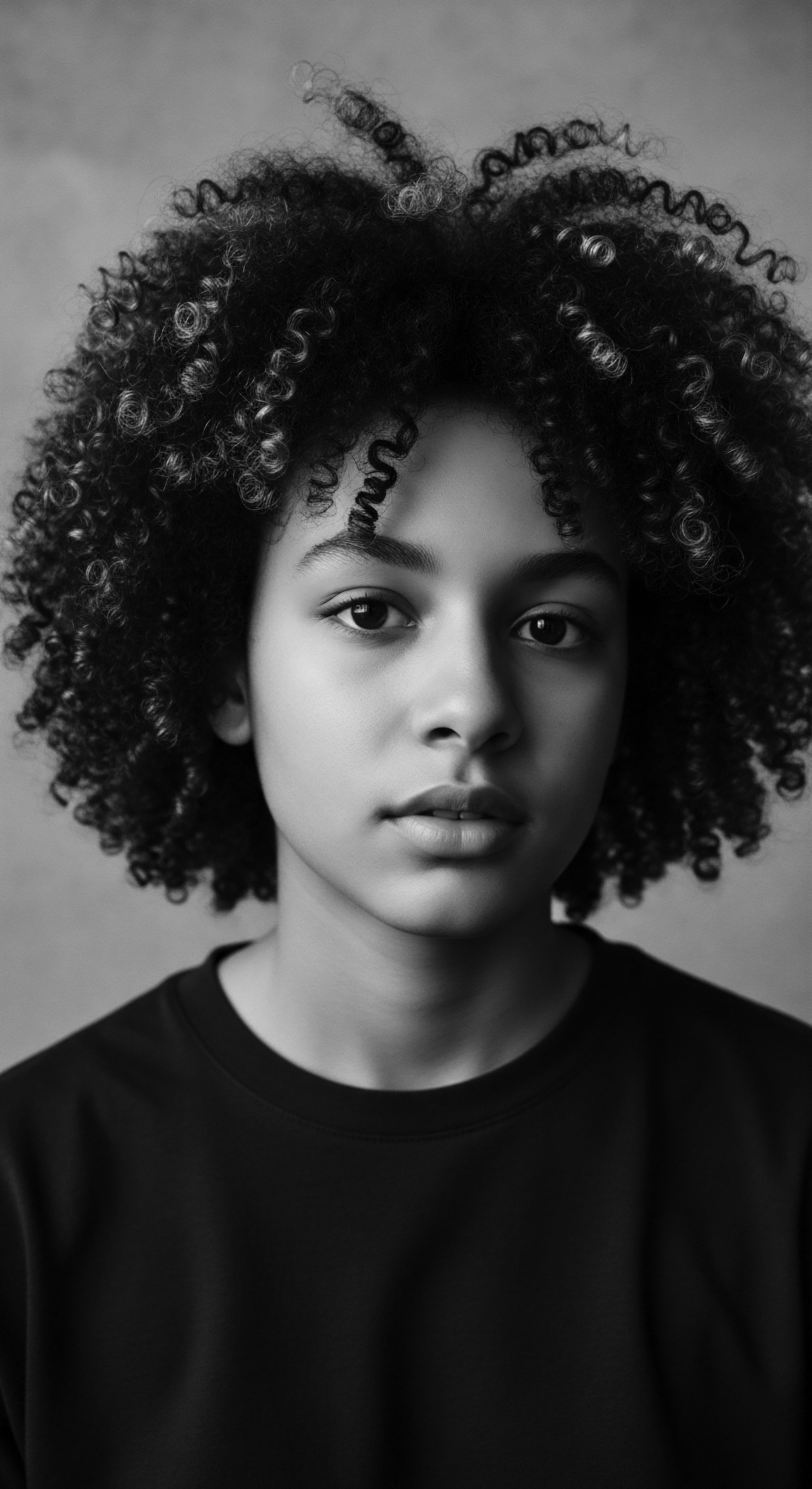
Bio-Cultural Synapse
The unique structural properties of afro-textured hair, specifically its tightly coiled, elliptical cross-section, and the curved shape of its follicle, are not merely biological facts; they are profoundly integrated into the Cultural Hair Essence. This biological form, which evolved to offer natural insulation and UV protection in ancestral African environments, laid the groundwork for care practices that understood and worked with, rather than against, the hair’s inherent nature.
Traditional African hair care, relying on natural emollients and protective styling, represents a sophisticated ethnobotanical and biomechanical understanding of textured hair, validated by contemporary trichology. For example, the use of shea butter and various plant oils to moisturize and seal the hair cuticle reflects an intuitive grasp of moisture retention for coiled strands, which are prone to dryness due to their structural characteristics.
| Traditional Ingredient/Practice Shea Butter & Natural Oils (e.g. coconut) |
| Ancestral Benefit (Cultural Hair Essence) Moisture retention, scalp nourishment, protective seal. |
| Modern Scientific Correlation Rich in fatty acids and vitamins, these seal moisture into the hair shaft, reducing breakage and dryness, which is crucial for high-porosity textured hair. |
| Traditional Ingredient/Practice Herbal Infusions/Rinses |
| Ancestral Benefit (Cultural Hair Essence) Scalp health, cleansing, spiritual purification. |
| Modern Scientific Correlation Antimicrobial and anti-inflammatory properties of certain herbs promote a healthy scalp microbiome and reduce irritation. |
| Traditional Ingredient/Practice Protective Styling (braids, twists, locs) |
| Ancestral Benefit (Cultural Hair Essence) Minimizes manipulation, preserves length, signifies status/heritage. |
| Modern Scientific Correlation Reduces mechanical stress on fragile coiled strands, preventing breakage and aiding in length retention. Protects against environmental damage. |
| Traditional Ingredient/Practice These parallels demonstrate the enduring wisdom of ancestral care practices within the Cultural Hair Essence. |
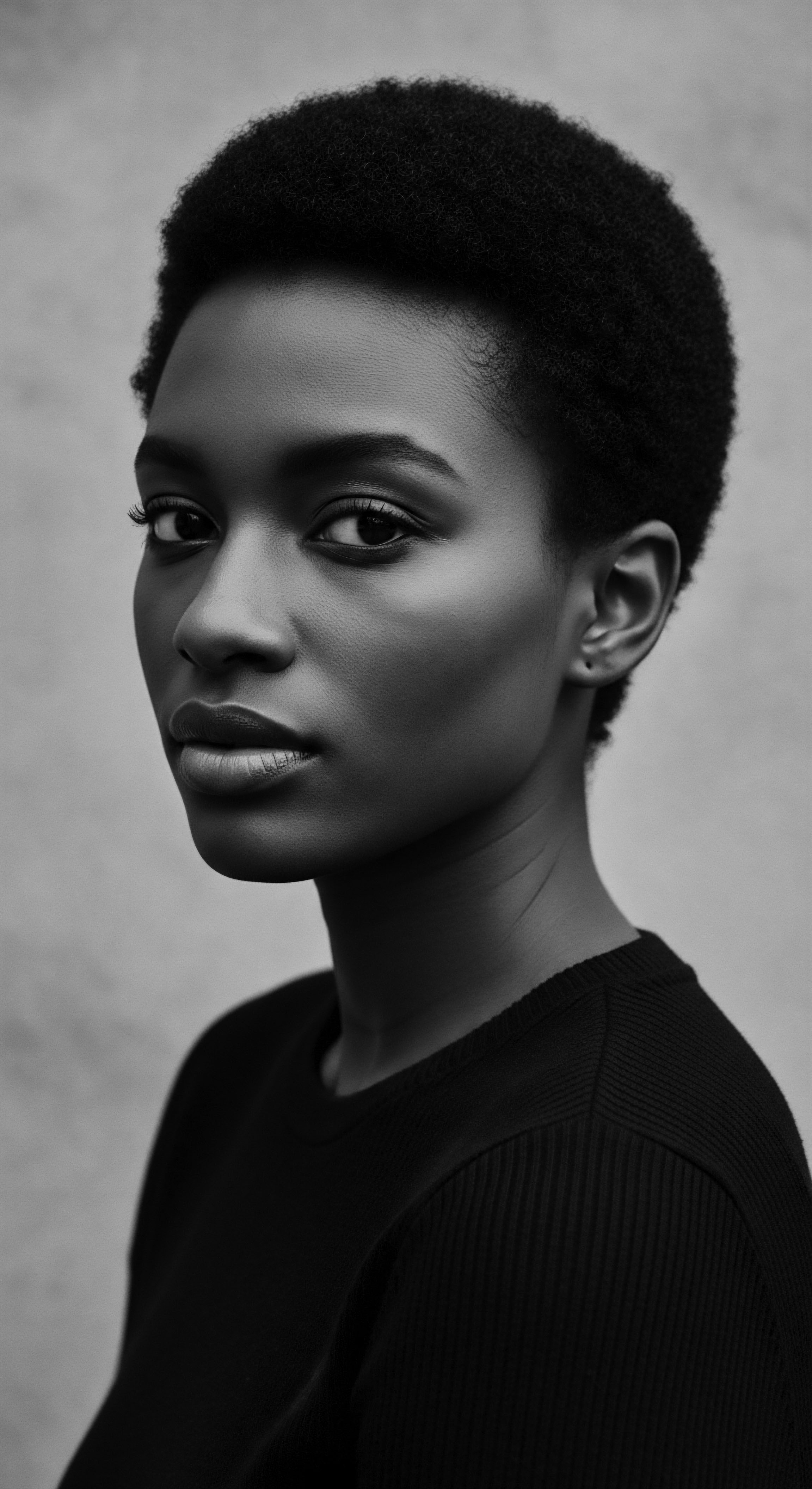
The Cartographic Coil ❉ A Case Study in Resistance
A powerful demonstration of the Cultural Hair Essence’s enduring relevance lies in the ingenious utilization of hair as a tool for survival and communication during the transatlantic slave trade. This period, characterized by brutal dehumanization, saw enslaved Africans stripped of their languages, customs, and identities. Yet, their hair remained a profound, if often silent, means of cultural preservation and resistance.
An often-cited, yet profoundly impactful, historical example is the practice among some enslaved African women of braiding rice seeds into their hair before forced migration or while planning escape routes. These braided styles, particularly cornrows, were not merely practical ways to manage hair under harsh conditions; they served as covert maps, embedding escape routes and landmarks for those seeking freedom along the Underground Railroad. The tightly woven patterns could conceal valuable information or small tools, such as seeds for cultivation upon escape, offering a tangible link to survival and a future beyond bondage. This practice highlights the extraordinary resilience and ingenuity of enslaved populations, transforming a seemingly mundane act of grooming into a sophisticated act of defiance and cultural continuity.
This act of braiding, often performed communally, also fostered a unique form of social bonding and communication, creating a space for solidarity and shared purpose amidst immense suffering. The physical act of a community member tending another’s hair became a quiet ritual of care, trust, and mutual aid, reinforcing the collective spirit and preserving a fragment of cultural autonomy. The profound psychological and emotional significance of this communal act cannot be overstated; it was a defiant assertion of humanity and connection.

Diasporic Continuities
The Cultural Hair Essence, through the African diaspora, demonstrates remarkable adaptability and persistence. Across the Americas, the Caribbean, and other regions, traditional African braiding techniques and styles were preserved, adapted, and evolved, becoming powerful symbols of Black identity and cultural heritage. The continuity of these practices, despite centuries of oppression, speaks to the inherent strength of the Cultural Hair Essence as a resilient cultural marker.
The reclamation of natural hair in the 20th and 21st centuries, often catalyzed by movements for civil rights and Black liberation, signifies a profound return to ancestral aesthetics and a rejection of Eurocentric beauty standards. This shift extends beyond personal style; it is a political statement, a declaration of self-acceptance, and a communal celebration of textured hair in all its diverse forms. This revitalization demonstrates a conscious effort to restore respect to natural hair and its role in Black identity today.
Half of Black and mixed women with afro-textured hair in the UK have experienced discrimination due to their hair, underscoring hair’s ongoing societal significance and the need for greater acceptance.
Contemporary studies, such as the Dove study in the UK, reveal that societal perceptions of textured hair continue to impact individuals significantly, with half of Black and mixed women with afro-textured hair reporting discrimination because of their hair. This statistic highlights the ongoing struggle against race-based hair discrimination, reinforcing the notion that the Cultural Hair Essence, while a source of pride, also remains a site of social contestation and a testament to the persistent legacy of historical prejudices.

The Psychological Resonance
The relationship between hair and psychological well-being for individuals with textured hair is profound. For many Black and mixed-race women, their “hair journey” is deeply personal, often marked by childhood struggles to embrace their natural state amidst societal pressures for straightened hair. The societal devaluation of textured hair has historically led to self-hate and attempts to conform. However, the act of caring for natural hair, embracing its unique qualities, and wearing culturally affirming styles can be a deeply empowering experience, fostering self-acceptance and connecting individuals to their roots and community.
The Cultural Hair Essence, from this psychological viewpoint, becomes a framework for understanding how hair can be a source of trauma when discriminated against, and simultaneously, a powerful source of healing and self-definition when embraced. The communal rituals of hair care, passed down through generations, contribute to a sense of shared experience and solidarity, reinforcing individual self-esteem within a supportive cultural context. This holistic perspective emphasizes that care for textured hair extends far beyond the physical strands, deeply influencing mental and emotional health.

Reflection on the Heritage of Cultural Hair Essence
The journey through the Cultural Hair Essence reveals a profound truth ❉ hair is far more than a biological adornment; it is a vibrant, living archive of our human story, particularly for those whose strands carry the rich legacy of textured hair heritage. From the protective coils shaped by ancient sun to the intricate braids that mapped pathways to freedom, and the audacious Afro that declared self-love, hair has been a steadfast witness to triumphs and tribulations. Its story is one of unyielding spirit, a constant testament to the human capacity for adaptation, artistic expression, and resilience in the face of adversity.
The tender thread of care, passed from hand to hand across generations, whispers ancestral wisdom, reminding us that true wellness encompasses not just the physical strand, but the spiritual connection it embodies, the communal bonds it strengthens, and the historical narratives it carries. Understanding the Cultural Hair Essence is not a passive act of observation; it is an invitation to engage with a deep, personal history, to honor the ingenuity of those who came before us, and to recognize the inherent dignity in every coil, kink, and wave. Our hair, indeed, remains a powerful voice, an unbound helix of identity, continually shaping who we are and guiding us towards a future where every strand is celebrated for its inherent beauty and the profound heritage it holds.

References
- Byrd, A. & Tharps, L. (2014). Hair Story ❉ Untangling the Roots of Black Hair in America. St. Martin’s Griffin.
- Rosado, S. (2003). African Hair and Identity in the Diaspora. (Unpublished doctoral dissertation). University of California, Berkeley.
- Mercer, K. (1987). Black Hair/Style Politics. New Formations, 3, 33-52.
- Okpalaojiego, J. (2024). The Remarkable History Behind Black Hairstyles. Salford Students’ Union Blog.
- Oyelade, I. (2015). Visual Documentation of Traditional Nigerian Hair Styles and Designs as a means of expressing Social and Cultural Heritage through. Global Journal of Arts Humanities and Social Sciences, 3(6), 23-33.
- Patton, T. O. (2006). Hey Girl, Am I More Than My Hair? African American Women and Their Struggles with Beauty, Body Image, and Hair. Black Women, Gender and Families, 1(1), 1-13.
- Tharps, L. (2014). Hair Story ❉ Untangling the Roots of Black Hair in America. St. Martin’s Griffin.
- Uzzi, F. O. et al. (2021). The cultural importance of Oba beaded Regalia of the Oba of Benin kingdom. Journal of Urban Culture Research, 23, 94-106.
